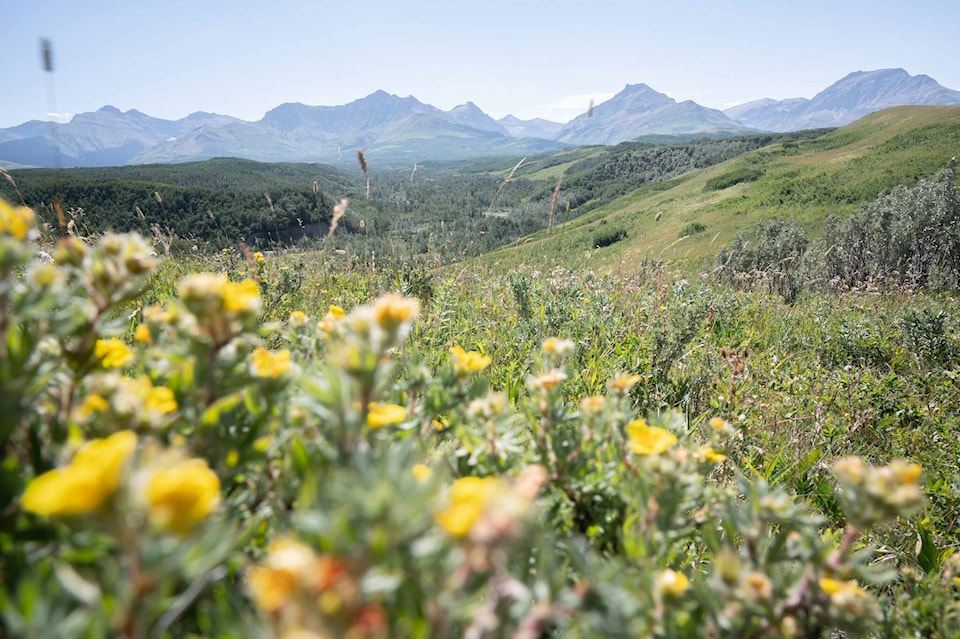Dec. 7 to 19, governments, scientists and conservation experts are gathering in Montreal for a global summit on nature, called COP15. There, they will set a course to end nature loss around the world — to create a nature-positive future. But what does that really mean for us here in Alberta?
Having grown up on a family ranch in the southwestern foothills of Alberta, I am fortunate to have developed a lifelong connection to and love for prairie grasslands, which are home to abundant and diverse plants and wildlife. Through this experience, I learned first-hand how people impact nature, both positively and negatively.
Ranching demonstrates how the proper stewardship of the land promotes our own well-being, both economically and mentally, while providing a place for nature to thrive. It also teaches the importance of not only keeping but improving the health of our natural landscapes for the next generation. If we take care of nature, it will take care of us.
But Alberta’s incredible natural landscapes are under increasing pressure by development and conversion.
Consider our iconic rough fescue (the official grass of Alberta) prairie grasslands as an example. Winds once rippled through the Prairies — stretching from Waterton to Winnipeg — covering more than one million square kilometres.
Unfortunately, we now have only 24 per cent of our native rough fescue grasslands left in the Alberta foothills and across the Prairies — and more and more are lost every year.
In fact, temperate grasslands are one of the most endangered ecosystems on the planet. This ecosystem that supports so much life continues to be converted to other uses, primarily crop planting.
And yet these same grasslands support so much life. They help feed us, by nurturing pollinators and grazing mammals. They quench our thirst, filtering our communities’ drinking water with their roots. And they protect us, storing vast amounts of carbon and retaining water during spring melts and summer droughts.
Our well-being is intimately tied to the health of the natural world around us. And we’re at a point now where nature’s health is ailing.
Over the last half-century, bird, wildlife and pollinator populations have declined due to habitat loss and other factors. When these species disappear, lose their range and cease to interact, our natural world is weakened and with it our natural defences against climate change are weakened as well.
But we can reverse these trends. In fact, we’re well underway.
This has been an incredible year for conserving natural grasslands in Alberta, with several new projects being achieved by Nature Conservancy of Canada. One was a 643-hectare site in the Porcupine Hills, made possible by a conservation-minded landowner. This project built upon almost 7,700 protected hectares nearby, forming a robust conservation network across this breathtaking and significant landscape.
We are working to not only conserve prairie grasslands, but also to restore them. Some of my colleagues have been working tirelessly to restore prairie grassland at a conservation project in southeastern Alberta for greater-sage grouse, one of Canada’s fastest declining endangered bird species. While there have been successes, this project also shows that conserving what we have is far easier than recreating what we have lost.
There’s no doubt we need to do more, faster, to protect these places and the plants and animals that give them life. That’s why NCC has ambitious conservation targets, to double its impact and support Canada toward its goals to conserve 30 per cent of its lands and waters by 2030. Of course, it will take a whole-of-society approach to achieve these critical outcomes. That’s why NCC is bringing together communities, non-profits, governments and corporations to accelerate nature protection through projects like The Yarrow.
The Yarrow, a 1,650-hectare project near Waterton Lakes National Park, Alberta, for which NCC announced a public campaign in October. This conservation project will safeguard some of our province’s most iconic ecosystems and the species calling it home — an example of what we can do when we work together.
I’m proud to know my NCC colleagues attending COP15 will be able to share the news of conservation successes like The Yarrow on the international stage. And while the world works to figure out a plan to halt global nature loss, I’m confident in our homegrown ability to act now in Alberta.
- Tom Lynch-Staunton is Alberta Vice President with Nature Conservancy of Canada
